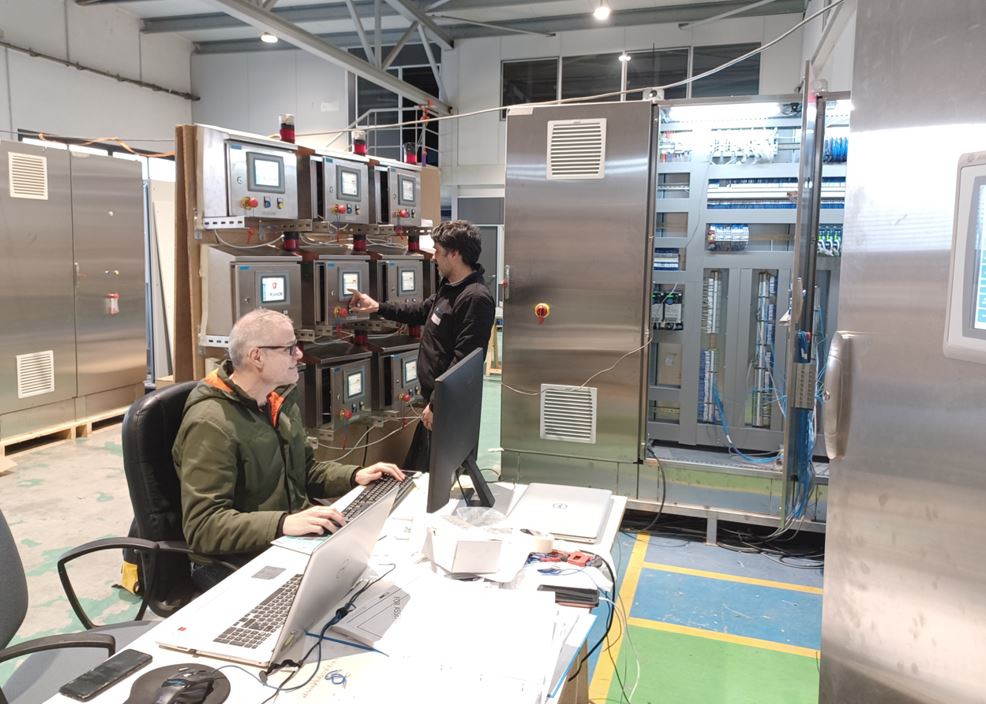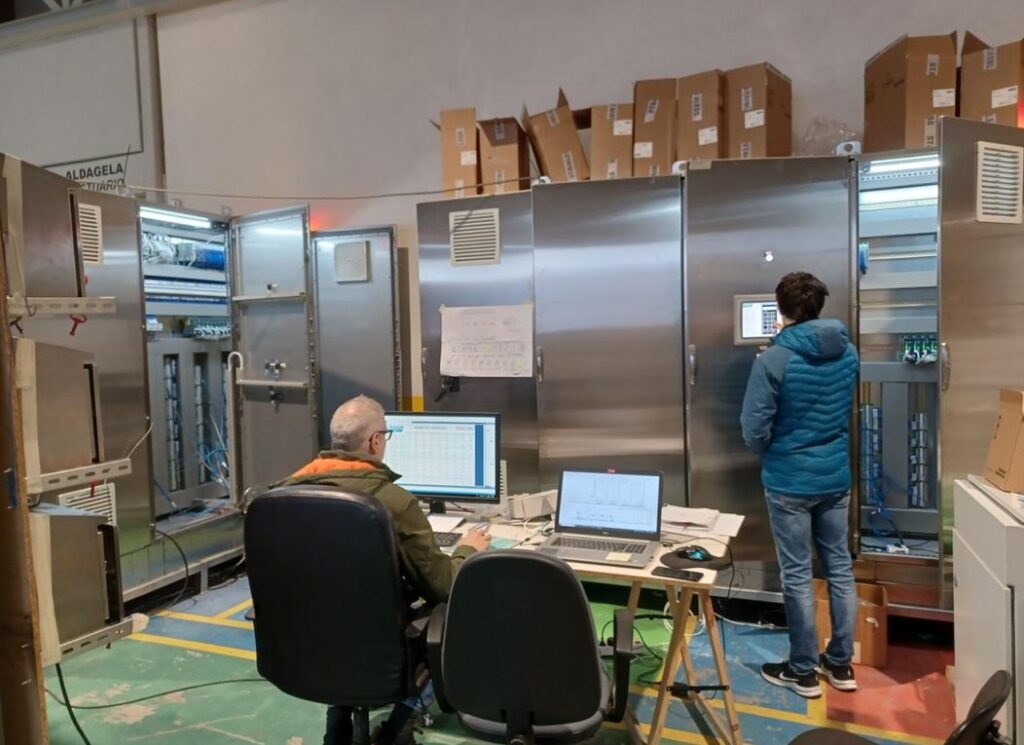
FAT and SAT are validation tests used to make sure the production is done correctly. But what are FAT and SAT testings?
- Factory Acceptance Testing (FAT): FAT is conducted at the manufacturer’s or supplier’s facility before the equipment is shipped to the customer’s site. It entails a set of verifications to ensure that all customer specifications and requirements are met. The FAT is carried out by the manufacturer or supplier’s quality control team or engineers.
The purpose of FAT is to verify that the equipment functions properly, performs as intended, and meets the contractual and technical requirements specified by the customer. It allows the customer to inspect and test the equipment before it is delivered to their location. Any issues or non-conformities identified during the FAT can be addressed and rectified by the manufacturer or supplier before shipment.
- Site Acceptance Testing (SAT): SAT, on the other hand, takes place at the customer’s location or site after the equipment has been delivered. This type of test is intended to ensure the correct operation of the product or system at its first start-up and to verify it meets all the requirements of both functionality and performance. SAT tests also include all the necessary training of the technical staff responsible for managing and handling this type of solution. It is conducted to ensure that the equipment operates correctly within the customer’s specific environment and meets the performance criteria and functional requirements. During SAT, we also verify that the equipment functions as expected and integrates properly into the customer existing systems or processes. The testing may involve simulating real-world scenarios or running the equipment under normal operating conditions to validate its performance. Any issues or discrepancies discovered during the SAT are usually addressed through collaboration between the customer and the manufacturer.
The main objectives of FAT (Factory Acceptance Testing) and SAT (Site Acceptance Testing) are as follows:
Factory Acceptance Testing (FAT):
- Verification of Specifications: The FAT aims to verify that the equipment or system meets the specifications and requirements agreed upon between the customer and the manufacturer. It ensures that the equipment is built according to the agreed-upon design and functionality.
- Performance Validation: The FAT tests the performance of the equipment under simulated operating conditions to ensure that it functions as intended.
- Functionality Testing: The FAT verifies that all the functions and features of the equipment are working correctly. It examines individual components, subsystems, and interfaces to ensure proper integration and operation.
- Quality Assurance: The FAT helps identify any defects, issues, or non-conformities in the equipment. It allows the manufacturer to rectify and address these issues before the equipment is delivered to the customer, ensuring a higher level of quality assurance.
Site Acceptance Testing (SAT):
- Integration Testing: The SAT checks the integration of the equipment into the customer’s existing systems, processes, or infrastructure. It verifies that the equipment interacts correctly with other components or interfaces and performs its intended functions in the operational environment.
- Performance Validation: The SAT tests the equipment under actual operating conditions at the customer’s site to validate its performance. It assesses factors such as responsiveness, efficiency, accuracy, and any specific performance requirements unique to the site.
- User Acceptance: The SAT involves the customer or end-users actively participating in the testing process. It allows them to evaluate the equipment’s usability, functionality, and performance and provide feedback or acceptance based on their requirements and expectations.
Overall, both FAT and SAT aim to ensure that the equipment meets the specified requirements, functions properly, integrates well, and performs as expected in its intended environment. These tests help mitigate risks, improve customer satisfaction, and minimize potential issues or disruptions during the assembly, commissioning or operation of the equipment or system.
Both tests play crucial roles in ensuring the quality and suitability of the equipment for its intended purpose.
FAT and SAT testing at Gashor
We adapt to our clients’ needs. For us it is vital to study the proper testing to conduct in each of our clients. This is the reason why, first, our group of experts analyzes the client and concludes which testing is the convenient one in each case.
Each test is then adapted to the type of installation, and customer requirements, there is no one size fits all concept, but we really focus on what is important for the customer and implement those needs in the FAT or SAT tests.
If you need more information about which is the best option in your case, do not hesitate to contact our team of experts. We will give you personalized advice to find the best option in your case.

